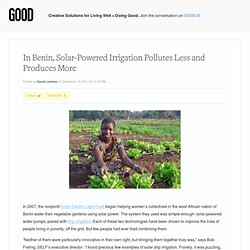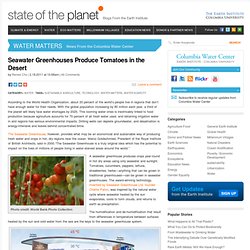

Hubs. Sustainable Development Farm Tour. Raising the (Green) Roof!! Mountain Equipment Co-op Building, Green Roof.

Copyright Terri Meyer Boake. Last Saturday I attended a Green Roofs and Roof Gardens workshop hosted by Everdale Organic Farming & Environmental Learning Centre. Carolyn Moss, Principal Architect at Moss Sund Inc and Terry McGlade, Horticulturalist and President of Gardens in the Sky were our professors for the day spent at a public library in Toronto. The room was packed with about 50 people from all walks of life; from architects to designers to home owners interested in greening their roofs. There was even a guy from La Garrotxa, outside of Barcelona, interested in doing a green roof. Visual Potato Guide at Epicurious.com.
P otatoes are the most consumed vegetable in the United States—roughly 113 pounds per person in 2010—and they're quickly gaining popularity as the most popular food staple in the world, right behind rice. Clearly people don't love the spud because of its looks: Eye candy it's not, with its lumpy shape and bland coloring. Potatoes are also not superconvenient to eat, since they have to be cooked. But in their favor, potatoes are easy to grow and produce a large yield. They're nutritious—high in potassium, vitamin B6, and vitamin C, while sweet potatoes score high on vitamin A and beta-carotene. In Benin, Solar-Powered Irrigation Pollutes Less and Produces More - Environment. In 2007, the nonprofit Solar Electric Light Fund began helping women’s collectives in the west African nation of Benin water their vegetable gardens using solar power.

The system they used was simple enough: solar-powered water pumps, paired with drip irrigation. Each of these two technologies have been shown to improve the lives of people living in poverty, off the grid. But few people had ever tried combining them. “Neither of them were particularly innovative in their own right, but bringing them together truly was,” says Bob Freling, SELF’s executive director. “I found precious few examples of solar drip irrigation. This technological innovation means the women’s collectives can keep producing crops during the region’s six-month dry season, provide greater food security to their families, and start thinking about sending their kids to school.
The pilot is the first step in a larger vision of bringing solar power to households, clinics, schools and business centers in the district. The Farmers' Market, Reimagined as a Neighborhood Food Truck. As the local food trend grows, so does consumer demand for farmers' markets.

But as it stands, farmers' markets are mostly the domain of middle and upper-class neighborhoods. GOOD and The Architect's Newspaper aim to change that with the Redesign Your Farmers' Market competition, a challenge that asked designers to figure out ways to effectively sell fresh, local produce to urban residents. The winning entry, chosen today from 22 finalists, is Farm on Wheels, designed by Mia Lehrer and Associates. The Farm on Wheels concept features a fleet of electric trucks that dispatch produce from a vast network of local farms to residents of Los Angeles. A centralized farmer's market dishes out fruits and vegetable for the electric trucks, which travel to underserved areas throughout the city, fresh farm food in tow. Seawater Greenhouses Produce Tomatoes in the Desert - Water Matters - State of the Planet. According to the World Health Organization, about 20 percent of the world’s people live in regions that don’t have enough water for their needs.

With the global population increasing by 80 million each year, a third of the planet will likely face water shortages by 2025. This looming water crisis is inextricably linked to food production because agriculture accounts for 70 percent of all fresh water used, and obtaining irrigation water in arid regions has serious environmental impacts. Drilling wells can deplete groundwater, and desalination is energy-intensive and leaves behind concentrated brine. The Seawater Greenhouse, however, provides what may be an economical and sustainable way of producing fresh water and crops in hot, dry regions near the ocean. Photo credit: World Bank Photo Collection A seawater greenhouse produces crops year-round in hot dry areas using only seawater and sunlight. Photo credit: Seawater Greenhouse Ltd.
Empowerhouse: Community. Deanwood Community Garden Our Community in Deanwood, Washington DC The Department of Energy’s Solar Decathlon is a competition that challenges 20 collegiate teams to design and build a cutting-edge sustainable house.

Held every two years since 2002 on the National Mall in Washington, the competition draws throngs of visitors during its ten-day run. The houses though are typically then transported across the country or around the world and then back to the schools where they were built. This time around we, the Empowerhouse team (comprising of students from Parsons The New School for Design, Milano School of International Affairs, Management, and Urban Policy, and the Stevens Institute of Technology) together with Habitat for Humanity of Washington, D.C., and the D.C. Several well-known African-American architects, including W.
Publications We hope the Deanwood book will create a common interest point for community members as well as create a collection of recipes unique to Deanwood.